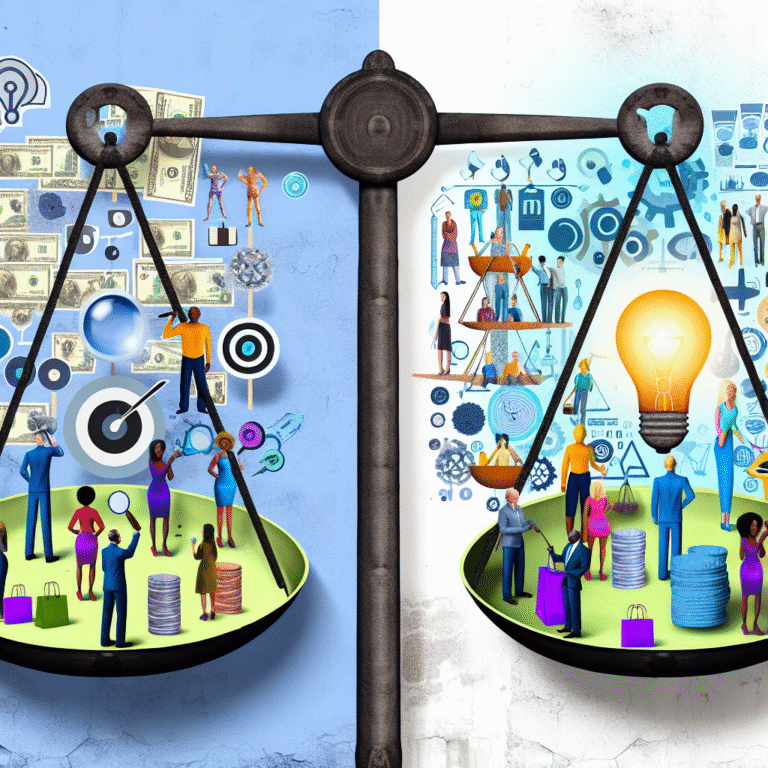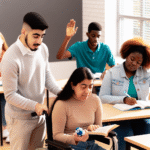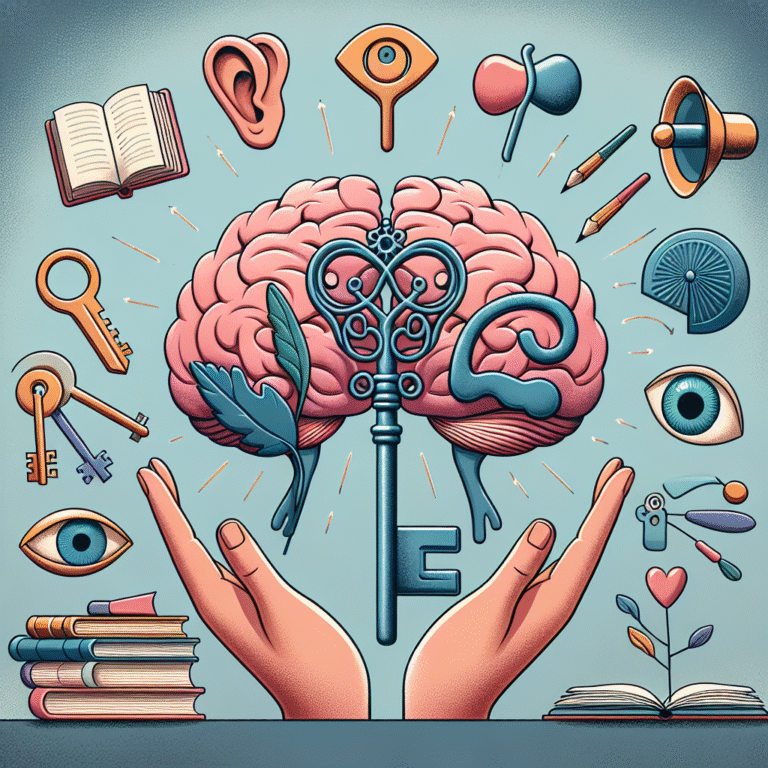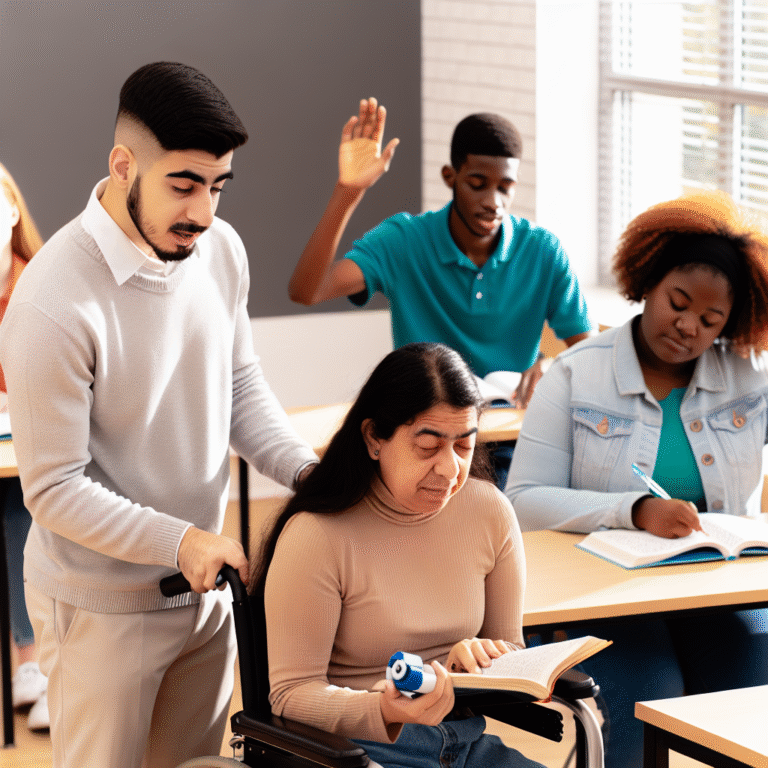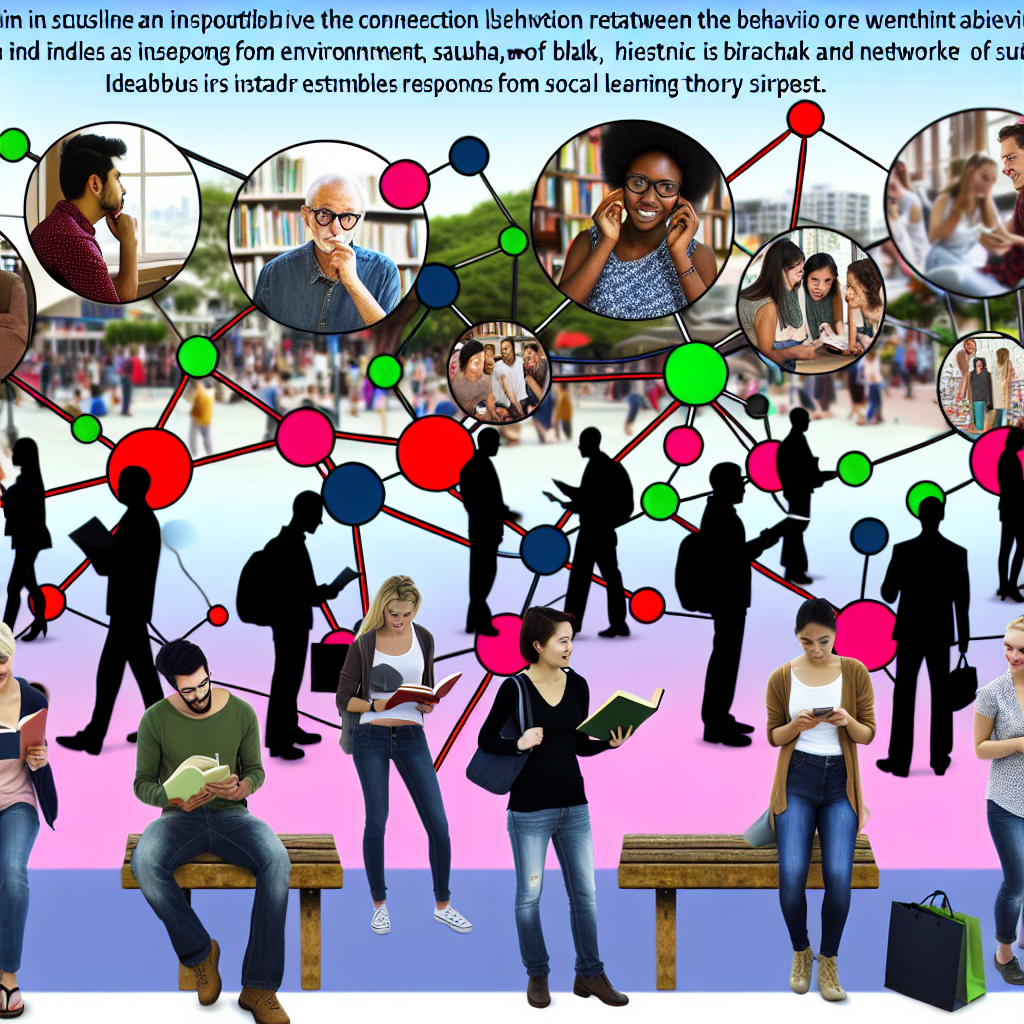
The Profound Connection Between Behavior and Environment: Insights from Social Learning Theory
Introduction
In a world where our actions shape not only our personal realities but also the societies we inhabit, understanding the connection between behavior and environment emerges as an essential endeavor. The intricate dance between the two finds significant grounding in Social Learning Theory, a framework that emphasizes the role of observation, imitation, and modeling in learning our behaviors. This article delves deep into the connection between behavior and environment, enriched by insights from Social Learning Theory, exploring how these elements interact and influence one another.
The Essence of Social Learning Theory
Social Learning Theory, pioneered by Albert Bandura, posits that people learn not just through direct experience but also by observing others. This concept, often summarized by the phrase “monkey see, monkey do,” underscores the importance of social context in shaping behavior. The essence of the connection between behavior and environment is emphasized here; our surroundings, social norms, and role models intimately influence our actions and choices.
The Triadic Reciprocal Causation Model
A cornerstone of Social Learning Theory is the triadic reciprocal causation model, which highlights the interplay between personal factors, behavior, and environmental influences. This model suggests that:
- Personal Factors: These include cognitive processes, beliefs, and personal experiences.
- Behavior: This is the actual action or response triggered by stimuli.
- Environment: This encompasses social settings, cultural contexts, and physical surroundings.
Table 1: Triadic Reciprocal Causation Model
| Component | Definition | Example |
|---|---|---|
| Personal Factors | Individual attributes that influence behavior | Self-efficacy beliefs about studying |
| Behavior | Actions taken by the individual | Studying for an exam |
| Environment | Contexts in which behaviors occur | Study group, classroom setting |
Case Study 1: The Influence of Role Models on Youth Behavior
Consider the impact of role models in the context of youth behavior. A study conducted in urban neighborhoods revealed that adolescents are significantly influenced by the actions of peers and community leaders. In areas where positive role models were present, rates of delinquency decreased, illustrating the connection between behavior and environment.
Analysis
This case exemplifies how environmental aspects, such as the presence of community role models, can actively shape behaviors, adhering to the principles outlined by Social Learning Theory. The youth, observing aspirational figures, tend to internalize their behaviors, reinforcing the essence of environmental impact.
The Role of Reinforcement and Punishment
Social Learning Theory further highlights the significance of reinforcement and punishment in behavioral development. Positive reinforcement encourages a behavior’s repetition, while punishment can deter unwanted actions.
Table 2: Types of Reinforcements
| Type | Description | Example |
|---|---|---|
| Positive Reinforcement | Strengthening a behavior by providing rewards | Praise for good behavior |
| Negative Reinforcement | Encouraging behavior by removing adverse stimuli | Removing chores for good grades |
| Punishment | Applying negative consequences to deter behavior | Removing privileges for misbehavior |
Case Study 2: Academic Performance and Classroom Environment
A striking example is found in educational settings. Research shows that students perform better in supportive classroom environments, where teachers model effective problem-solving strategies.
Analysis
This study showcases the connection between environment and behavior: a nurturing environment facilitated by teacher modeling increases student engagement and learning outcomes. Such findings illustrate the substantial influence of social conditions on behavior, resonating with the tenets of Social Learning Theory.
Observational Learning in Diverse Contexts
Observational learning transcends classroom walls; it permeates various aspects of life, such as family dynamics and cultural practices. The behavioral patterns observed within families have profound long-term implications on children’s development.
Case Study 3: Family Influence on Health Habits
A comprehensive study on family eating habits highlighted that children often mirror their parents’ dietary choices. Families who prioritize healthy eating tend to raise children with better nutritional habits.
Analysis
This case emphasizes the connection between behavior and environment as children are not merely influenced by their parents’ direct instructions but also by observing their everyday choices. The families’ eating practices become a blueprint for the children, aligning with the framework of Social Learning Theory.
The Digital Environment’s Impact on Behavior
In contemporary society, digital environments also play a crucial role in shaping behavior. With social media and online platforms as significant parts of daily life, the observations made within these environments can profoundly influence behavior.
Case Study 4: Social Media Use and Self-Image
Numerous studies have indicated that extensive exposure to idealized images on social media platforms directly affects body image and self-esteem among adolescents.
Analysis
This observation aligns seamlessly with Social Learning Theory, where the environment—here, social media—serves as a potent facilitator of behavior and self-perception. The adverse effects on mental health underscore the importance of managing environmental influences to foster healthier behaviors.
Creating Positive Behavioral Change: Practical Strategies
Understanding the connection between behavior and environment can empower individuals and communities to foster positive change. Here are actionable strategies grounded in Social Learning Theory:
- Role Modeling: Promote positive behavior through influential role models within communities.
- Constructive Environments: Design educational and social settings that encourage positive interactions and reinforcement.
- Foster Observational Learning: Create opportunities for individuals to observe successful behaviors in real-life contexts, from classrooms to community gatherings.
- Utilize Technology: Leverage digital platforms to disseminate positive behavioral models effectively.
Conclusion
The connection between behavior and environment, framed by insights from Social Learning Theory, reveals a vast landscape of interaction that shapes our actions and societal norms. By embracing the strengths of observational learning and recognizing environmental influences, we can inspire meaningful behavioral change. Whether through role models or supportive settings, each individual holds the potential to effect positive transformations within their communities.
As we reflect upon this connection, let us take actionable steps towards creating environments that nurture constructive behaviors. Embrace the exciting journey of learning, growing, and influencing others positively.
Frequently Asked Questions (FAQs)
1. How does Social Learning Theory apply to behavior change in organizations?
Social Learning Theory suggests that learning in organizations occurs through observation and modeling. By fostering a culture of mentorship and showcasing desirable behaviors, organizations can effectively implement behavior change.
2. Can negative environments lead to negative behavior patterns?
Yes, negative environments often lead to the reinforcement of undesirable behaviors. When individuals are exposed to adverse conditions, they may adopt similar negative actions.
3. How can parents apply Social Learning Theory in raising children?
Parents can model positive behaviors, provide reinforcement for good actions, and create supportive environments that encourage children to adopt constructive habits.
4. What role does media play in shaping behavior?
Media serves as a powerful tool for observational learning. The behaviors portrayed in media can shape societal norms and individual actions, making it crucial to consume media critically.
5. Are there interventions to improve environmental influences on behavior?
Yes, community programs aimed at providing access to positive role models, supportive settings, and pro-social activities can significantly enhance the environment’s impact on behavior.
By navigating the intricate landscape of the connection between behavior and environment through the lens of Social Learning Theory, we can cultivate a society where the synergy between these elements fosters growth, learning, and lasting change.





